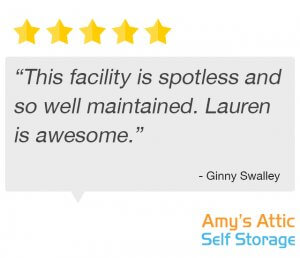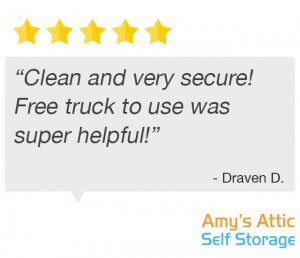Central Texas cities, such as Belton and Temple, are outstanding places to live for retirees. People 65 years and older make up an average of 10% of the population. There is also an abundance of retirement, assisted living, and nursing home communities. Central Texas and Belton, in particular, boast friendly quaint towns with plenty of natural attractions. In addition, the cost of living in these Central Texas cities is approximately 10% less than the national average making Central Texas an excellent location to live out your later years. However, for those who are not already blessed to live in the Central Texas area, new residents will likely have to move to experience all of Central Texas’ retiree benefits.
Moving for anyone is generally not an enjoyable experience. It is often extra work on top of an already demanding list of daily responsibilities. Moving requires hours of mental and physical energy. As you might imagine, moving can prove even more difficult for those of advanced age; after all, a move for senior citizens often involves packing up years of precious memories and possessions and normally having to do the move with below average mobility and agility. Whether you are looking to downsize, declutter to make your house more manageable while you age, or move to an assisted living facility, below are six moving and storage tips for senior citizens.
1) Give Yourself Plenty of Time and Plan Your Moving Timeline
As soon as you suspect (at least 6 months in advance) that you may be looking to downsize, move, or declutter, begin making a tentative timeline for what it will look like. It may take several months to sort through belongings, pack items, and get other affairs in order. The sooner you begin the less stressful it will be on your mind and body. Starting early will also allow you to make decisions about which items you would like to sell, donate, trash, give to friends and family and allow you to follow through with what you decide. Starting early will also allow you to coordinate with family, friends or movers for help and to determine when to transfer your utilities, mail, and other contacts.
In your timeline, try to determine time frames for specific goals, like…
By 6 months before the move, I would like to have the kitchen and master bedroom belongings sorted
-or-
By 5 months before the move, I would like to have my first yard sale of items I wish to sell
Once you have a tentative big picture timeline, you can begin to break them down into smaller tasks and adjust timeline based on your needs. Also, if you are planning to move to a smaller space, it will be good to get an idea of how much smaller the space will be or how much you want to downsize in order to get a better idea of how to respectively downsize your belongings (if you are downsizing by 50%, you should look at downsizing your belongings by 50%) and then build your timeline according to those numbers and how quickly you realistically can downsize that many things. It will also be helpful to keep a list of people you have enlisted to help, moving companies and prices you’ve looked at, contacts you will needs to transfer with your timeline to make the process as easy and stress-free as possible.
2) Enlist Help
Enlist friends, family, and professionals help as early as possible. Ask plenty of friends and family to help sort, pack, and move items. Let them know of your tentative moving timeline early, so they can make plans to help you through most of the process. Having loved ones be there throughout the process will help not only alleviate physical exertion, but can be emotionally beneficial, especially when sorting sentimental items or to give advice when you feel overwhelmed. Gather information about moving, packing, and storage unit companies (if you plant to use them). Make notes of reviews, prices, and features to easily compare and choose later on. Call a nearby storage unit facility to get an idea about unit sizes, prices, and features. Make sure to ask the storage facility professional about what will fit in what size unit and if a climate-controlled unit would better fit your needs. This information will be beneficial in deciding what size unit will be best for your needs and budget.
3) Sort Your Belongings (Keep, Store, Sell / Giveaway /Donate, Trash)
During this stage of the process you will sort your items into items you wish to keep, store, sell/giveaway/donate, or toss in the trash.
- Keep – First, decide which items you can absolutely not live without. These are items you need to perform day-to-day activities and to keep up your home (dishes, towels, cleaning supplies, hobby supplies, etc.). Make a list of these items to ensure they do not get sorted into one of the other piles. During this step, keep in mind that although these are items you cannot live without, you may not need the quantity of each item that you have previously used. If you will not use 12 new towels in your new or decluttered home, including those times you have guests, consider possibly giving away, selling, or donating a few. You might also want to keep items of high value with you in your home.
- Store – Next, decide what items you may want to store. When deciding which items you would like to store, keep your budget in mind. Based on your initial research on storage unit sizes and prices, you should have a good idea about the amount of storage space you can afford and the type of items that can fit in that amount of space. Stick to storing sentimental items that you may not wish to see every day but want to still have, items you wish to pass on to future generations but do not actively need in your home, seasonal decorations, hobby supplies for less frequent hobbies, family photos/memorabilia, and documents you wish to keep but do not need in your home.
- Sell / Giveaway / Donate – Next, decide which items would be beneficial to sell. These are items that are still in decent condition, but you never use and has no sentimental value. These could be things that are still in the box, things that just don’t fit your style, or items you’ve used once and have kept because you think you may need again someday but haven’t. Consider donating or giving away items that do not sell.
- Trash – Trash items that are in poor condition or that no one will use.
4) Packing and Storage Tips
- Packing Tips
- Set Manageable Packing Goals – Don’t try to pack your entire house in one fell swoop. Start with just a drawer or dresser and only do what is manageable for you in a specific time frame. This will ensure you stay safe and reduce stress.
- Choose Plastic Tubs – Choose packing in plastic tubs over cardboard boxes when deciding to store items. Plastic tubs keep items secure from pests, dust, and damage.
- Clean Items First – Clean items before packing or storing to avoid attracting pests.
- Label Well – Label each box as descriptive as possible. Consider labeling with type of room the items belong, a list of what is in the box, and if there are more boxes in the sequence (box 1 of 3). This will save a ton of time when unloading and finding items.
- Pack Fragile items with Care – Wrap fragile items, such as, dishes, vases, and decoration in non-printed newsletter (as can come off on your items) and pack tightly where they will not move around in their box.
- Don’t Forget to Pack an “Open First” Box – Pack a box with all of the essentials you will need (bedding, toiletries, chargers, etc.) you first few nights at your new place.
- Electronics – Take out batteries before packing or storing to avoid damage to your items. Wrap cords neatly and secure with string. Make sure to include cords and accessories in same box as the main electronic. Cover electronics in a canvas breathable material and store in original containers, if possible.
- Storage Tips
- Store Off The Ground – Store all items off of the ground on shelve or wooden pallets to secure from flooding and dust.
- Store in a Clean, Secure, Climate-Controlled Unit – Choosing a clean, secure, climate-controlled unit will help to ensure you receive your items in the same condition when you remove them from storage as you did when you stored them. Climate-controlled units are often a better fit for most items. Furniture, clothes, books, and electronics all fair better under climate control. It keep items from warping or molding.
- Store biggest items on the bottom with lighter smaller items stacked on top to keep from damaging any items.
- Store frequently used items near the front of the unit to make them more accessible when you go to use them.
For more detailed packing and storage tips visit https://www.amysatticss.com/packing-tips/.
5) Safety First
Safety is of upmost importance in a move. Getting injured would only delay your move.
- Don’t pack boxes too heavy – Only pack boxes that you can reasonably carry and not over 50lbs.
- Use Proper Lifting Techniques – Lift items by keeping items close to your body, your back straight, head up, and bend at the knees.
- Use Necessary Equipment – Use dollies, moving straps, hand trucks, furniture sliders as necessary.
- Ask Others to Lift the Heavy Stuff – If moving heavy things like appliances or large furniture, ask multiple younger people to move it for you or hire movers as necessary to avoid causing yourself injury.
- Keep moving path clear to avoid any tripping accidents.
- Dress Appropriately – Wear comfortable clothes and closed-toe footwear for moving day.
- Have a first aid kit on hand in case of accidents.
- Remember to stay hydrated and fed to maintain your energy and stay healthy.
- Keep your phone charged in case you need to make a call in case of emergency.
6) Remember Emotions Are Normal
Sad or frustrated emotions are normal for those relocating, especially after living in the same place for some time. Relocation Stress Syndrome (RSS) can appear as exhaustion, anxiety, depression, anger, feeling disoriented, feeling sad, etc. The best way to combat these feelings and RSS is to lean on family and friends. Ask for help in the move and talk openly about how you are feeling. When you get to your new location get connected in the community (library, religious activity, hobby group, interest group, etc.).






